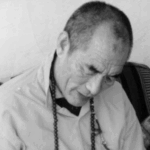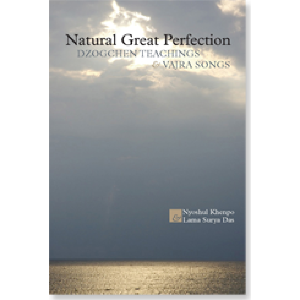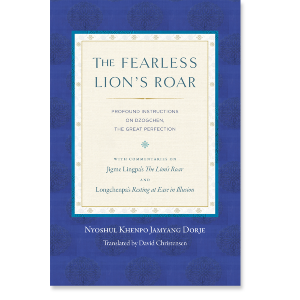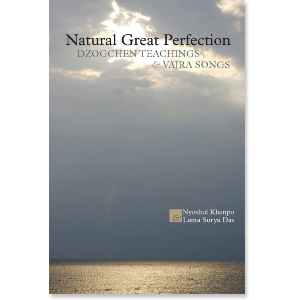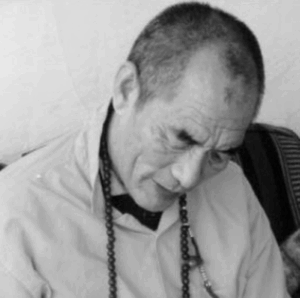 Get out of the construction business! Stop building bridges across the raging waters of samsaric existence, attempting to reach the “far shore,” nirvana. Better to simply relax, at ease and carefree, in total naturalness, and just go with the primordial flow, however it occurs and happens. And remember this: whether or not you go with the flow, it always goes with you.
Get out of the construction business! Stop building bridges across the raging waters of samsaric existence, attempting to reach the “far shore,” nirvana. Better to simply relax, at ease and carefree, in total naturalness, and just go with the primordial flow, however it occurs and happens. And remember this: whether or not you go with the flow, it always goes with you.
Yet it is not so easy—or so it seems. First we must recognize this profound view, innate Great Perfection, then train in it, then attain unshakable stability in it. This is the path of practice, undistractedly maintaining the view or outlook to which one has been introduced and which one has recognized. Only then can realization progressively unfold. Thus, training implies nonmeditation, noneffort, and nondistraction, a vivid presence of mind. Innate wakefulness, nonconceptual wisdom, nondual primordial awareness—buddha-mind—is suddenly unsheathed the moment dualistic mind dissolves. This can occur gradually, through study, analysis, and spiritual practice, or suddenly, through the coming together of causes and conditions, such as when a ripe student encounters a totally realized master and inexplicably experiences a sudden awakening.
Buddha-nature is pure, undefiled, unelaborated, unconditioned, transcending all concepts. It is not an object of dualistic thought and intellectual knowledge. It is, however, open to gnosis, intuition, the nondual apperception of intrinsic awareness itself, prior to or upstream of consciousness. Adventitious obscurations temporarily veil and, like clouds, obscure this pristine, sky-like, luminous fundamental nature or mind essence—also known as tathagatagarbha, buddha-nature.
All conventional practices along the gradual path to liberation and enlightenment aim to uncover this innate wisdom by removing and dissolving the obscurations, revealing what has always been present. This is the relation between how things appear to be and how things actually are: in short, the two levels of truth, absolute and relative or conventional truth. According to these two truths, there are different levels of practice.
The subtle and profound Vajrayana view emphasizes correctly recognizing the ultimate view, the wisdom inherent within oneself; this is the renowned vajra-shortcut elucidated in the Dzogchen tantras. The approach of the various sutra vehicles depends on, and utilizes, purification of dualistic consciousness, until the mind is eventually purified and freed of obscurations and defilements. The tantric approach depends upon, and from the outset utilizes, wisdom, nondual awareness, rather than mere mind. This is a crucial difference.
The sublime view of Dzogpa Chenpo, the ultimate vehicle, is that everything is pure and perfect from the outset. This is the absolute truth, the supreme outlook or view of Buddhas, which implies that there is nothing that need be done or accomplished. Based on such recognition of how things actually are, the meditation of Dzogchen is nonmeditation, resting in the evenness of being, rather than doing any particular thing, beyond hope and fear, adopting and rejecting. The action or behavior of Dzogchen ensues from such transcendence, and is totally spontaneous, aimless, and appropriate to whatever conditions arise. The fruition of Dzogchen is the innate Great Perfection itself, inseparable from the very starting point of this swift and efficacious path: rigpa itself, one’s own true nature.
—Nyoshul Khenpo Rinpoche
adapted from Natural Great Perfection: Dzogchen Teachings and Vajra Songs

